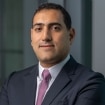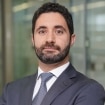{{item.title}}
{{item.text}}

{{item.text}}
Megadevelopments, which include mixed-use development projects covering hundreds of thousands of square meters, are typically launched with a broad socioeconomic agenda in the Middle East. They can have a lasting positive impact when they succeed. However, success is never assured. These projects are highly complex, put substantial capital at risk, and require at least a decade to be completed. It is thus imperative that
megadevelopments start with a concept that puts in place the fundamentals for success, and that allows for resilience in case of an unexpected event, such as the COVID-19 pandemic.
Successful megadevelopment concepts reflect three key principles:
1. Be rooted in the context: Successful concepts consider all key opportunities and constraints, based on a detailed understanding of: fundamental needs and preferences of all stakeholders, tangible and intangible characteristics of the location, and long-term market dynamics
2. Be clear, customer-centric, and coherent: Successful concepts clearly define their target segments and the value proposition for each, and ensure coherence between all components
3. Be flexible: Flexibility is essential if the concept is to stand the test of time. It allows for adjustments to the concept as the context changes and in the event of unpredictable events. For any master developer who may have forgotten the importance of being able to rethink plans and switch directions, COVID-19 provides a stark reminder.
Megadevelopments have been used across the world to pursue numerous socioeconomic goals and achieve national-level ambitions. Among the most important are:
Megadevelopments have many characteristics that help them reach these goals. Their sheer scale creates a beneficial effect in that the total is larger than the sum of individual components. Megadevelopments also allow for better planning in a way that integrates different components. Moreover, “greenfield” megadevelopments benefit from the flexibility and the potential innovation that come from not being limited by existing assets, infrastructure, or sociopolitical structures.
However, megadevelopments require large amounts of capital and considerable time, generally more than a decade, to be completed. Furthermore, shortfalls in the concept are rarely apparent in the early phases. They usually emerge only after significant amounts of time and capital have been invested. For all these reasons, it is crucial to get the initial concept right and to embed flexibility within it.
There are three main pitfalls commonly faced by megadevelopments. The first is when the concept’s ambition is not supported by solid fundamentals within the project’s context. The second is when the concept is loosely defined, which leads to incoherent components or gaps in the offering. The third is when the concept fails to adapt to changing external factors or unexpected events, which are almost certain to occur given the long time span of megadevelopments. The COVID-19 crisis is a new example of an unexpected shock; more familiar ones are commodity price shocks, financial instability, and political crises.
Megadevelopments have a unique ability to deliver broad socioeconomic impact. To succeed, they need to start with a robust concept that is aligned with the context, clearly defined in a customer-focused and coherent manner, and sufficiently flexible to adapt to changes.



Menu